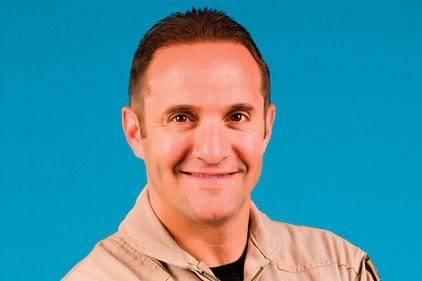
|
| Lt. Col. Rob “Waldo” Waldman |
In an F-16, hostile fire, bird strikes, engine failures, and even bad weather can threaten us every time we take flight. Out of our control, each has the power to take us down. In business, the threats, while obviously different, are serious nonetheless. Your life may not be on the line, but the life of the sale, your job, or your company is. A sales objection, incorrect order, missed deadline, or even the flu can take you off course and shoot you down.
How do you handle these hazards? Are you mission-ready, or do you go into a tailspin?
Preparing for Adversity
I used to think that attitude had a lot to do with how one responds to the missiles of business and life. But the more time I spend in business, the more I’m convinced that the success or failure of a mission is determined by how we prepare for adversity.
In the world of the fighter pilot, the biggest factor that leads to success in the hostile and competitive world of combat is preparation, not attitude. Believe me, my wingmen and I didn’t play motivational CDs in the mission-planning room before combat. Sure, motivation is important, but we prepared in order to ensure success.
Preparation leads to power. And power means confidence and trust in our ability to handle any adversity in flight. We were briefed about the mission, studied the threat, formulated the tactics, delegated roles and responsibilities, and then, most importantly, mentally rehearsed the mission. We contingency planned every emergency, missile launch, and possible threat. We call this “chair flying,” and it played a critical role in our ability to win as a team of trusted partners when the stakes were high.
Everything is hypothetical until the battle begins, so anticipate the unexpected. From the moment tactics are planned, emergency procedures are outlined, communication requirements are set, and the target is plotted, until the mission is flown, there are no guarantees that things will go as planned.
There is little margin for error, so preparation is absolutely critical to winning. The greater the preparation, the greater the ability to handle adversity, and the stronger the partnership that develops. For this reason, fighter pilots frequently assert, “The more you sweat in peace, the less you bleed in battle.”
Flexibility Is the Key
To prepare for every scenario in battle, fighter pilots are taught to ask always, “What if … ?” What if the weather changes? What if one of us gets shot down or loses an engine? What if the tanker can’t refuel us?
We come up with a plan for every possible scenario and then execute those plans in our head — not while we’re in flight, but earlier, while sitting in a chair, strapped into a flight simulator, or during a mission briefing. We leave that briefing confident in our ability — and our wingmen’s abilities — to adapt to change and to execute. In essence, we become more flexible.
Once again, it’s not about walking to the jets motivated with a positive attitude. We should already be motivated — otherwise, what are we doing in a flight suit? The only thing that ultimately matters is how we perform.
I first learned the habit of chair flying during pilot training at Williams Air Force Base in Arizona, when I was a young student struggling to learn all the maneuvers, radio calls, and emergency procedures with my classmates. The training was intense, stressful, and, at times, overwhelming.
The instructors told us the best way for us to learn was to simulate flying while sitting down as if we were in the cockpit. If we had time, we would rehearse in the cockpit of an actual simulator. When at home, some students even used a plunger, stuck to the floor between their legs, as a mock control stick. The point was to rehearse the maneuvers in real time and carefully mimic each step or skill exactly as if we were flying four miles up at Mach 2.
Most of the work we did was in our minds, with subtle physical motions that supported the imagined event. Many pilots would close their eyes while chair flying and later reported feeling as though they were moving through the air. The mind has a way of preparing the body for everything (if we allow it to).
Cool and Confident
You probably remember Capt. Chesley B. “Sully” Sullenberger and his crew on US Airways Flight 1549. On Jan. 15, 2009, Sullenberger’s Airbus A320 lost power in both engines after hitting a flock of birds on takeoff from LaGuardia Airport. Rapidly losing altitude and unable to reach an airport, Sullenberger took the only emergency runway available: the Hudson River. Cool and confident, Sully executed a plan. He and his crew knew exactly what to do, and his experience and skill, along with the teamwork of his wingmen, landed the aircraft in frigid waters. All 154 passengers survived.
Sully chair flew this mission dozens of times, and so did his crew. Their sweat and sacrifice before the emergency allowed them to execute with skill and confidence and save every passenger. No blood was lost, and lives were literally transformed. Although the crew considered it all in a day’s work, to everyone else they were heroes.
The more you sweat, the less you bleed.
Publication date: 05/14/2012


Report Abusive Comment